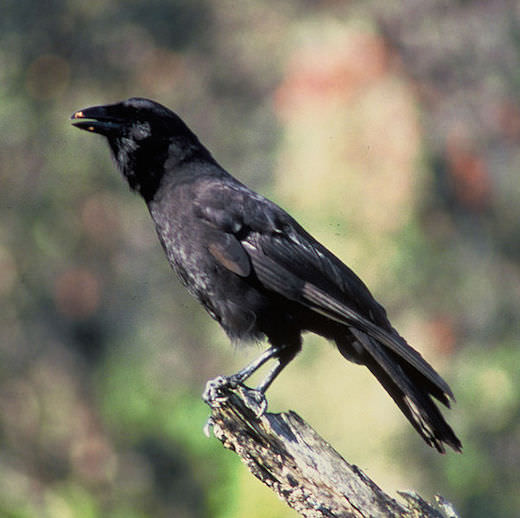Hawaiian crow

Extinct in wild 2002
The Hawaiian crow had brownish-black plumage with long, bristly throat feathers. The feet, legs, and bill were all black in color. They had round wings and a thick bill. The Hawaiian crow was about 50 centimeters in length. Their voice has been described as a two-toned caw, like a screech with lower tones added in. They were also said to make a ca-wk sound with a complex, burbling sound. The Hawaiian crow was known for their strong flying abilities and resourcefulness.
Habitat and Diet
The Hawaiian crow was primarily found in the western and southeaster parts of Hawaii. They inhabited dry and mesic forests on the slopes of Mauna Loa and Hualalai. They only lived in elevations of 300-2500 meters. However, fossil remains reveal that they were abundant on all the main islands at one point. The Hawaiian crow mainly lived off of eggs, nestlings, invertebrates, and fruit. Some minor components of their diet included flowers and carrion's. They would also pry bark off of trees and eat the insects that resided underneath it.
Extinction
Although it is not known for sure, it is thought that diseases such as Toxoplasma gondii, avian malaria, and fowl pox caused their extinction in the wild. The last two known wild Hawaiian crows disappeared in 2002. The Hawaiian crows are now considered extinct in the wild by the IUCN. There are, however, 115 Hawaiian crows living in captive breeding facilities operated by the San Diego Zoo. The U.S Fish and Wildlife Service had a five year plan to spend more than fourteen million dollars trying to keep them protected. They are currently protecting the crows habitats and managing threats to the species.